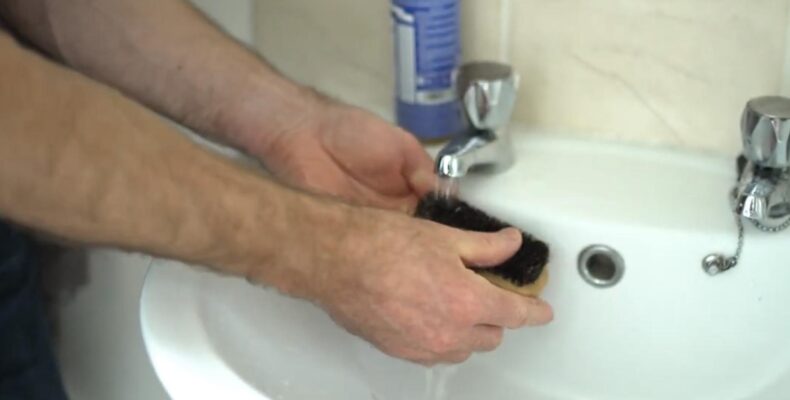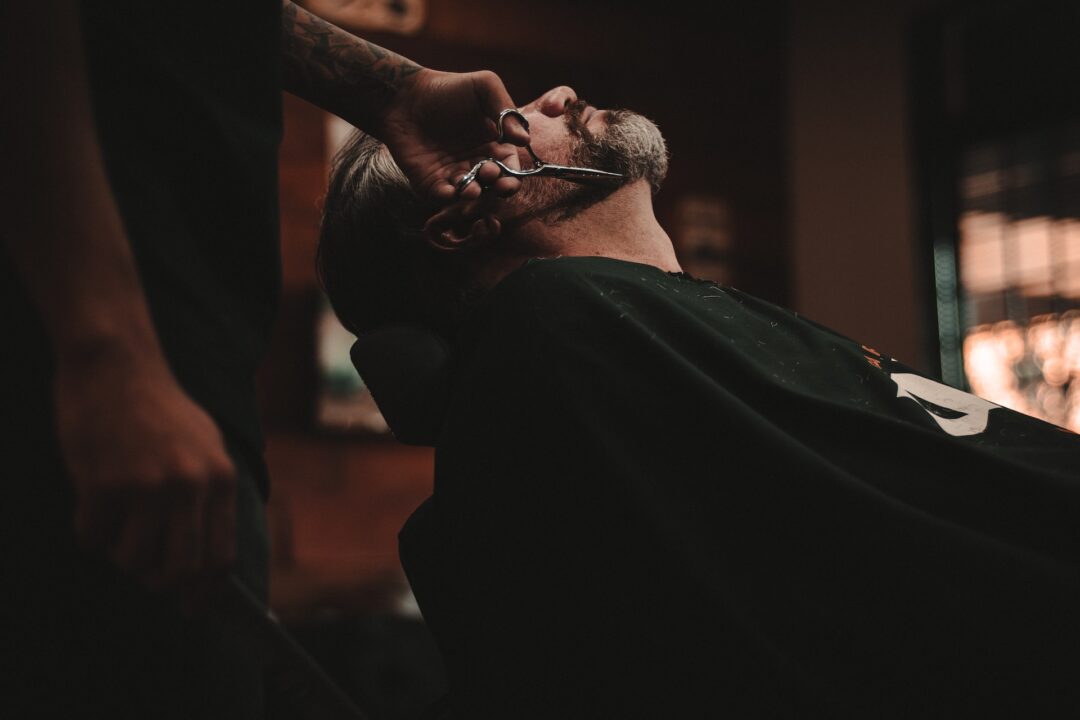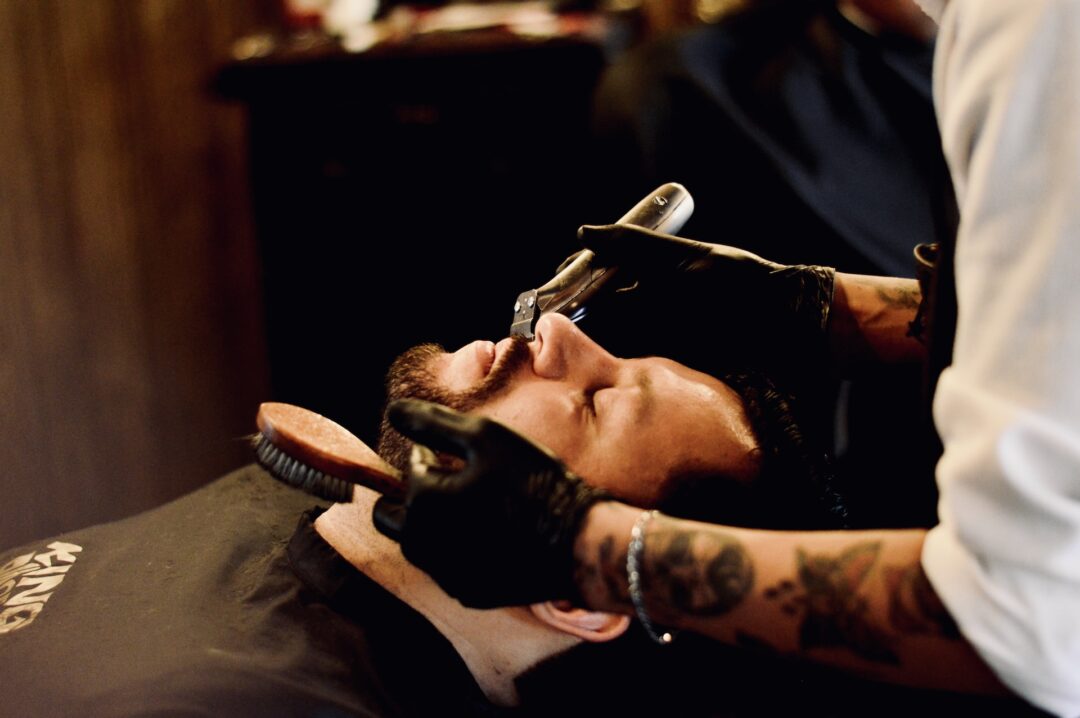However, the care procedure doesn’t end at just cleaning. Oiling the brush, especially after a thorough wash, can considerably extend its lifespan. A touch of beard oil, when applied appropriately, can penetrate deep into the wood, nourishing and protecting it from potential damage. Now, for those who wish to keep their brush – whether for the beard or hair – in top-notch condition, here’s an exhaustive step-by-step guide:
First Step
Before diving into the actual cleaning process, it’s essential to prepare the brush. Begin by using a brush cleaner. If that’s not available, even a regular comb can work. The main goal is to get rid of trapped hairs, dust, and other sizable debris. ‘s brush cleaner, in particular, boasts a design that can delve deep into the brush’s roots, ensuring that no debris remains lodged, all while guaranteeing the bristles remain unharmed.
Second Step
One might wonder if this step is redundant after the initial cleanup. However, there’s always some fine dirt or dandruff that escapes the first step. To address this, hold the brush under running water. Remember, it’s essential not to submerge the brush completely, as brushes can be sensitive to excessive water. The force of the water stream will carry away the lingering loose particles, leaving the bristles cleaner and ready for the next step.
Third Step
After preparing and rinsing the brush, it’s now time for an in-depth cleanse. Utilize a mild hand soap or perhaps a gentle shampoo for this purpose. Lathering up the bristles might need a little elbow grease, especially to reach the hidden recesses. Employing your fingers can provide the required precision and force. For those stubborn residues or oils that refuse to budge, the beard cleaning tool is the perfect companion. It’s specially designed to scrape off such persisting dirt. Once satisfied with the cleaning, it’s crucial to rinse the brush well, ensuring no soap remains.
Fourth Step
After the exhaustive cleaning process, it’s tempting to leave the brush anywhere to dry. However, the drying step is just as critical. Firstly, give the brush a gentle wipe to remove excess water. Then, position it with the bristles facing down. This orientation ensures that the steel, which secures the bristles to the wooden base, doesn’t corrode. Another tip is to always dry the brush at room temperature. Exposing the wood to heat can cause sudden humidity changes, leading to potential cracks.
Final Step
When the brush feels dry to the touch, the final step beckons: oiling. Beard oil is a suitable choice, but for those who wish to go the extra mile, any food-grade oil is exemplary. Linseed or Flax oil stands out as an especially commendable option for the wooden part of the brush. While applying the oil, it’s also beneficial to massage it into the bristles, ensuring even the roots receive their share of nourishment. Once oiled, contrary to the drying step, the brush can be set with its bristles facing up.
The Art and Science of Brush Maintenance
Grooming is an intimate ritual, one that goes beyond the mere act of keeping oneself presentable. It’s a personal journey and a form of self-care. At the heart of this ritual lies the tools we use, and brushes, particularly those of high quality like the , play a pivotal role. These brushes, when maintained correctly, can be both functional tools and artistic heirlooms, passed down generations. Let’s delve deeper into the nuances of maintaining such exquisite grooming instruments.
The Historical Significance of Brushes
Over the ages, grooming tools have held immense significance. From ancient civilizations that used brushes made of animal hair and bone, to the ornate and intricate brushes of Victorian aristocracy, these tools have always been symbolic of status, hygiene, and personal care. They were often considered personal treasures. In the modern age, brands like to continue this legacy, marrying tradition with contemporary needs. Their brushes, with their unique lack of lacquer, pay homage to the rich history of grooming, requiring care reminiscent of those age-old practices.
Understanding the Brush Composition
Before delving into maintenance, it’s crucial to understand what goes into making a brush. The bristles, usually sourced ethically, are designed to provide optimal care for hair and skin. They are attached to a wooden base, often made of premium woods that are both sturdy and aesthetically pleasing. The absence of lacquer is a conscious choice, lending the brush an authentic touch but also necessitating careful maintenance.
Why Maintenance Matters
Brush maintenance isn’t just about prolonging the brush’s life; it’s about ensuring it performs at its peak. Dirt, oils, and debris can affect the brush’s efficacy. Over time, these can cause bristle damage and even skin issues when used. A clean brush ensures that hair and skin remain healthy, free from potential irritants. Furthermore, well-maintained brushes distribute natural oils evenly across hair strands, promoting shine and health.
The Role of the Environment
Environmental factors can significantly impact a brush’s longevity. For instance, brushes stored in damp conditions can become breeding grounds for mold and bacteria. On the other hand, excessively dry conditions can cause the wood to crack. The perfect environment is a balance – dry, but not arid, ensuring the brush remains hygienic and structurally sound.
Choosing the Right Products for Cleaning
Using the right cleaning agents is paramount. Mild soaps and shampoos are recommended because they cleanse without being harsh. For oiling, while beard oil is a popular choice, it’s essential to consider the wood’s nature. Some oils might be too heavy, clogging the bristles, while others might be too light, evaporating quickly without providing adequate nourishment.
The Therapeutic Nature of Brush Cleaning
Beyond the functional aspect, cleaning a brush can be therapeutic. The act of gently massaging the bristles, watching the water turn cloudy with dirt, and then clear, symbolizes purification. The rhythmic motions can be meditative, turning a mundane task into a moment of reflection.



